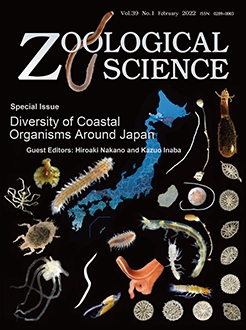The palaeonemertean genus Tubulanus Renier, 1804 currently harbors 35 species inhabiting the intertidal to the hadal zones. During a faunal survey in Sagami Bay, Japan, a single specimen of undescribed tubulanid having uniformly pale-colored body with a single dark-colored stripe on the dorsal surface was collected by dredging at depths of 116–211 m. Based on the body coloration and some anatomical features, it can be differentiated from the 35 congeners and is thus described herein as Tubulanus misakiensis sp. nov. In a molecular phylogenetic tree constructed with sequences available in public databases representing five markers (16S rRNA, cytochrome c oxidase subunit I [COI], 18S rRNA, 28S rRNA [not obtained for T. misakiensis], and histone H3), T. misakiensis was sister to Tubulanus izuensis Hookabe, Asai, Nakano, Kimura and Kajihara, 2020 and nested within a clade along with seven unidentified specimens from the abyssal and hadal zones (3428–9577 m); T. misakiensis and T. izuensis differed by 11.7% uncorrected p-distance in terms of 657-bp COI sequences.
How to translate text using browser tools
3 January 2022
Description of Tubulanus misakiensis sp. nov. (Nemertea: Palaeonemertea) from Sagami Bay, Japan
Natsumi Hookabe,
Hiroshi Kajihara
ACCESS THE FULL ARTICLE

Zoological Science
Vol. 39 • No. 1
February 2022
Vol. 39 • No. 1
February 2022
bathyal
deep sea
marine invertebrates
ribbon worm
systematics




